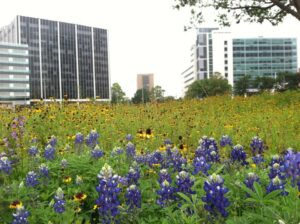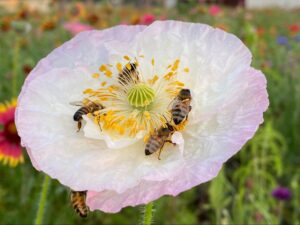While Summer heat hasn’t shown any signs of letting up for many of us in the Southwest regions of the U.S., we know that colorful leaves and crisp air are just around the corner. But today, we want to talk about…Spring! Why? Well, it’s age-old wisdom, one endorsed by Mother Nature herself: you reap what you sow. In the case of native wildflowers, planting native wildflowers in the fall leads to a riot of color and beauty in spring.
Beauty aside, native wildflowers bring many benefits, from supporting our pollinators to enriching our landscapes. In an earlier conversation, we talked about why and when to plant these flowers. Today, we’ll explore this in a little more detail.
Why Go Native? The Benefits of Planting Native Wildflowers
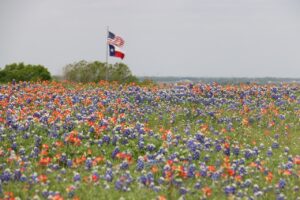 Our customers love the outdoors and appreciate the importance of biodiversity. Biodiversity is, of course, the secret sauce that makes ecosystems thrive. Native wildflowers play a vital role in it. While we could write an entire blog and still not scratch the surface of the rich value of wildflower plantings, for now, here are a few ways that they benefit the ecosystem.
Our customers love the outdoors and appreciate the importance of biodiversity. Biodiversity is, of course, the secret sauce that makes ecosystems thrive. Native wildflowers play a vital role in it. While we could write an entire blog and still not scratch the surface of the rich value of wildflower plantings, for now, here are a few ways that they benefit the ecosystem.
- A Feast for Pollinators and Wildlife: Native wildflowers attract a plethora of pollinators and provide them with nutrition. They’re a veritable feast for small mammals and birds, too. Take the Illinois Bundleflower, for instance. This member of the “Big Four” perennial forbs is a powerhouse of protein and a magnet for a wide range of wildlife, from deer and turkey to quail and dove.
- Environmentally Friendly: Native wildflowers require less water and are more resilient to local pests and diseases, significantly reducing the need for artificial irrigation and chemical interventions.
- Guardians of the Soil: These flowering wonders prevent erosion by stabilizing the soil with their extensive root systems. They retain and cycle nutrients in the soil and enhance soil health.
- Boosting Biodiversity: The assortment of native wildflowers we can plant contributes significantly to aboveground and belowground biodiversity. More on this here.
Choosing Wildflower Blends
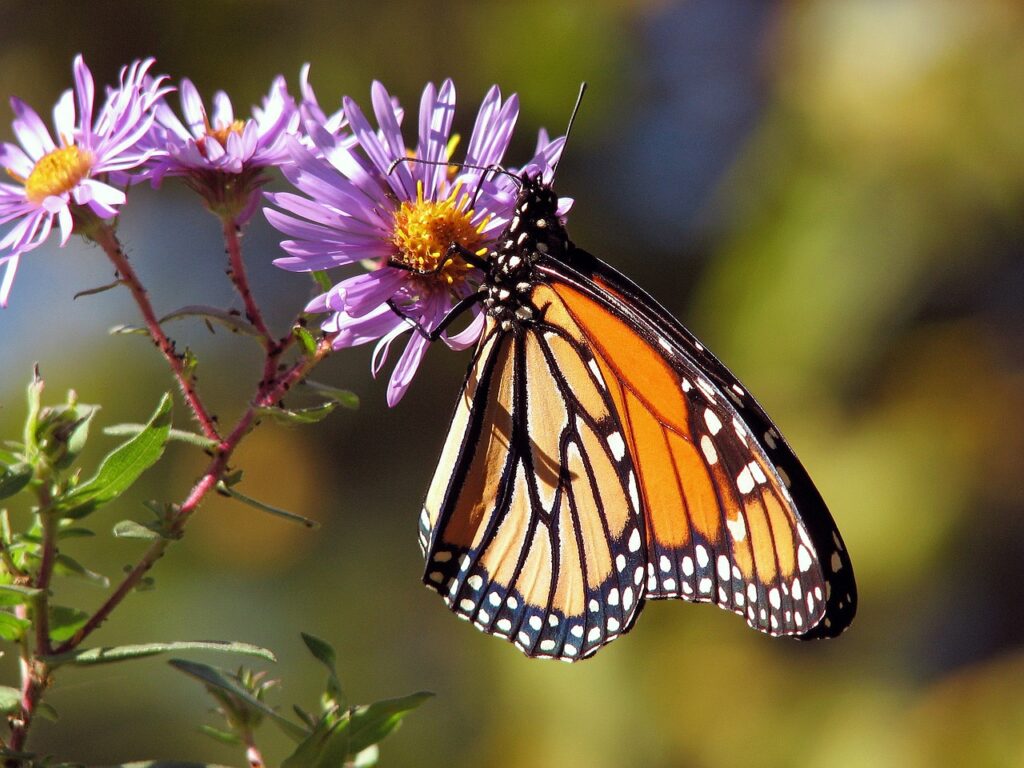
Picking the right blend of wildflowers can feel like a bit of a task, but at Bamert Seed Company, we aim to make that easy for you. We offer a range of carefully curated blends – including our Texas Wildflower Blend, Native Treats Blend, Honey Bee Blend, and Bird & Butterfly mix, to name a few.
You may wonder why we emphasize blends rather than single seeds. There are so many reasons!
- Diverse Blooming Periods: One advantage of a blend is that it will include both annuals and perennials, meaning you’ll enjoy different species blooming at various times throughout the year, ensuring continuous color and life in your garden.
- Less Maintenance: As these blends contain wildflowers that are well-suited to each other, they often require less maintenance compared to planting individual species. This can result in a more balanced and self-sustaining ecosystem within your garden.
- Attract a Variety of Wildlife: The wider the range of wildflowers, the more diverse wildlife you’ll attract. From different types of pollinators to various species of birds and small mammals, a blend can offer something for everyone.
- Suitable for Different Spaces: Whether you are planting a large field or a petite flower bed, our wildflower blends, such as Texas Wildflower, Honey Bee Blend, and Bird & Butterfly mix are tailored to benefit your soil, pollinators, and wildlife.
- Resilience: A blend of native wildflowers has a higher chance of thriving since they’re acclimated to the local climate and conditions. If one species struggles, others may flourish, ensuring you have a robust wildflower display.
More About Some of Our Wildflower Stars
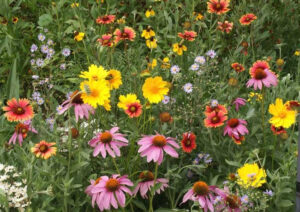 Each wildflower species in our blends carries a unique charm and utility. Here’s a closer look at a few:
Each wildflower species in our blends carries a unique charm and utility. Here’s a closer look at a few:
Engelmann Daisy: Tough yet lovely, the Engelmann Daisy is a cool-season species known for its drought resilience thanks to its large tap root. Its bright yellow blooms can be seen throughout the growing season, and its high-protein content makes it highly palatable to various livestock and deer.
Illinois Bundleflower: As a legume, the Illinois Bundleflower is rich in protein and is capable of fixing Nitrogen from the atmosphere. Its small, self-pollinating flowers form a ball-like cluster and bloom from spring until fall, attracting a wide range of wildlife and pollinators.
Bush Sunflower: Despite being smaller than most sunflower species, the Bush Sunflower stands out with its bright gold blooms. It’s a highly palatable plant, and both game birds and songbirds are attracted to its seeds.
Best Practices for Planting Native Wildflowers
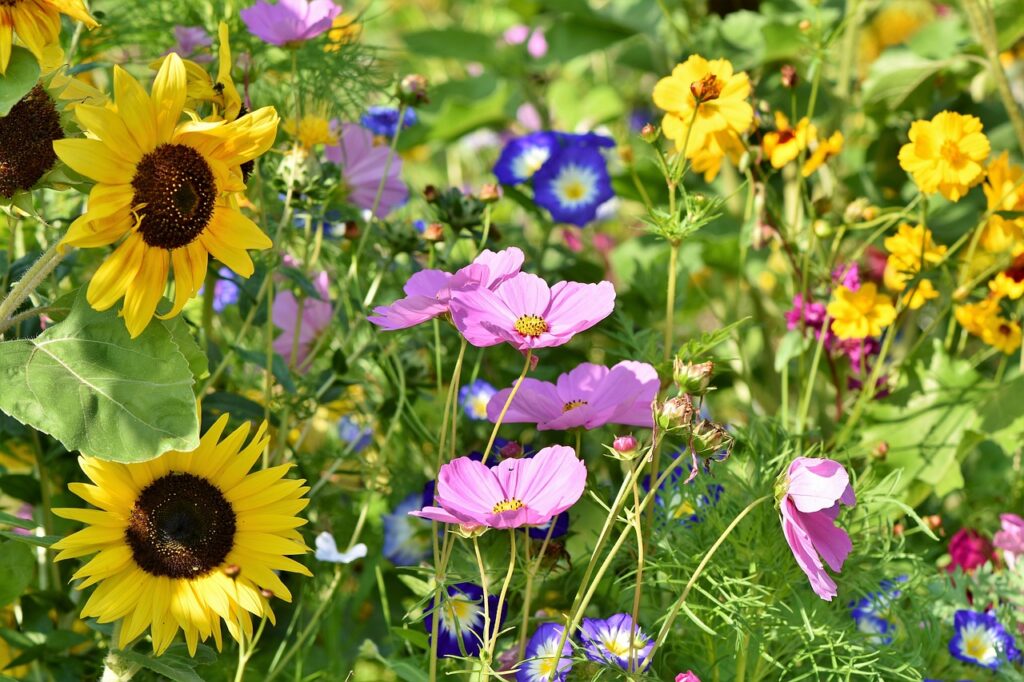
Planting native wildflowers in the fall requires some preparation and planning. Here are a few tips:
Timing is Crucial: Wait until after the first freeze before you begin your planting. This ensures that the seeds will stay dormant until the conditions are right for germination in the spring.
Prepare the Bed: A well-prepared seedbed ensures the best start for your wildflowers. Gently break up the soil to plant your seeds.
Broadcast Seeds Evenly: Spread your seeds evenly over the area to ensure a balanced display of wildflowers come spring. One of the most important tips with planting is to avoid planting too deep.
Overseed in the Spring: This means adding seed in the early spring to any areas that didn’t come in as thickly as you wanted. More on this can be found here.
Maintaining Your Wildflowers
Now, some folks might tell you that native wildflowers don’t need much care, and they’re partly right. But a bit of maintenance can help your wildflowers thrive.
Ensure that the soil is well-drained. While wildflowers are hardy, most don’t do well in waterlogged soil. Keep a lookout for weeds and remove them promptly. Wildflowers are self-sufficient, but competition from weeds can hamper their growth.
Finally, remember, just like with anything in life, patience is key. Wildflowers might take a little time to establish, but once they do, they’re a joy to behold.
Addressing Common Wildflower Questions and Misconceptions
There are some misconceptions about wildflowers that we’d like to clear up. First off, wildflowers aren’t “wild” in the sense of being unruly. They won’t completely take over if you plant them. In fact, many are quite well-behaved ;).
Secondly, while wildflowers are hardy, they’re not invincible. They still need good soil, sun, and a bit of care to thrive. And while they’re often drought-tolerant, this doesn’t mean they can survive without water, especially in their early growth stages.
Right now, we are getting ready to enjoy the beauty (and hopefully, cooler temps) of fall, but let’s spend just a little time prepping for the colors of spring. Fall planting, particularly of our native wildflowers, is a wise step towards a vibrant, lively landscape. Why not explore some of Bamert’s wonderful wildflower blends and take a step towards enriching your soil and nourishing our wildlife? Browse them here.

